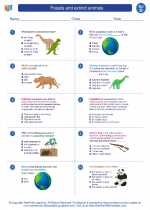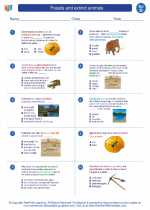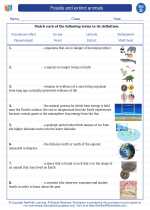Solar Eclipse
A solar eclipse occurs when the Moon passes between the Sun and the Earth, blocking all or part of the Sun's light. There are three types of solar eclipses: total, partial, and annular. A total solar eclipse happens when the Moon completely covers the Sun, a partial solar eclipse occurs when the Moon only partially covers the Sun, and an annular solar eclipse takes place when the Moon is too far from the Earth to completely cover the Sun, leaving a ring of sunlight visible.
Phases of a Solar Eclipse
1. Partial Eclipse: The Moon partially covers the Sun, creating a crescent shape of sunlight.
2. Total Eclipse: The Moon completely covers the Sun, creating a temporary darkness in the path of totality.
3. Annular Eclipse: The Moon is too far from the Earth to completely cover the Sun, leaving a ring of sunlight visible around the edges of the Moon.
Study Guide
- What causes a solar eclipse?
- What are the three types of solar eclipses?
- Describe the phases of a solar eclipse.
- What safety precautions should be taken when viewing a solar eclipse?
- What is the path of totality?
Understanding the phenomenon of solar eclipses can provide valuable insights into the interactions of celestial bodies and the effects they have on Earth. It is an awe-inspiring event that captivates people around the world.
Now that you have a better understanding of solar eclipses, you can appreciate the significance of these celestial events and share your knowledge with others!
.◂Science Worksheets and Study Guides Fourth Grade. Fossils and extinct animals

 Worksheet/Answer key
Worksheet/Answer key
 Worksheet/Answer key
Worksheet/Answer key
 Worksheet/Answer key
Worksheet/Answer key
 Vocabulary/Answer key
Vocabulary/Answer key
 Vocabulary/Answer key
Vocabulary/Answer key
 Vocabulary/Answer key
Vocabulary/Answer key
 Vocabulary/Answer key
Vocabulary/Answer key
